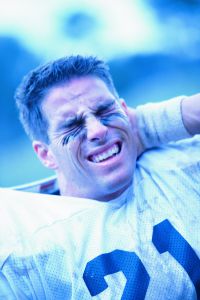
 When you think of high-impact sports such as football and hockey, the word “concussion” seems to almost always follow suit. These are the most high-risk sports for concussions. In fact, according to the Center for Disease Control, an estimated 1.6 million to 3.8 million sports and recreation-related concussions occur each year in the U.S.
When you think of high-impact sports such as football and hockey, the word “concussion” seems to almost always follow suit. These are the most high-risk sports for concussions. In fact, according to the Center for Disease Control, an estimated 1.6 million to 3.8 million sports and recreation-related concussions occur each year in the U.S.
Sure, there are studies which argue certain protective gear is aimed at reducing the risk of concussion, but what about not wearing any at all?
A recent Washington Post article takes a look at the controversial thoughts that maybe helmets aren’t helping prevent concussions as much as we think. The article highlights the University of New Hampshire football team and the idea that “risk compensation,” a theory that holds that protection can actually increase reckless behavior, is what keeps football players believing that just because they’re wearing a helmet, they can tackle and hit harder than without one.
When comparing the two sports of football and rugby, both are equally as aggressive and hard hitting, with one difference: rugby players wear less protective gear and absolutely no helmets, compared to football players. The outcome? Fewer head impacts in rugby. But how does a sport with fewer pads somehow seem safer?
“The football helmet was initially designed as a safety measure to prevent the frequent occurrence of head injuries, including lacerations, skull fractures and cerebral hemorrhages. As time has gone on, helmets have gotten better and better at protecting from these injuries as players have gotten faster and stronger,” said Access Sports Medicine & Orthopaedics Concussion Specialist, Kevin Heaton, DO.
The helmet has become a protection blanket for football players. The stigma behind it is that if you have stronger, safer helmets, it can reduce the risk of head injuries. But that doesn’t change the behavior of athletes. Instead, does the simple act of removing the helmet during practices train the athlete to tackle with greater caution?
“The helmet has changed the way a player tackles and the risks they might take. Without a helmet on, no sane person would launch themselves head first into an opponent’s head to make a tackle. However, with a helmet on, this type of tackling occurs routinely, putting players at higher risk for cervical spine injuries and concussions. What if we taught football players proper tackling techniques without a helmet? Perhaps that would make the game safer,” said Dr. Heaton.
It’s more than making the perfect helmet, because in reality, nothing is perfect. It’s more about changing the behavior of the players so they perform safer and are more confident on the field.
To learn more about concussion management, please visit www.accesssportsmed.com.

